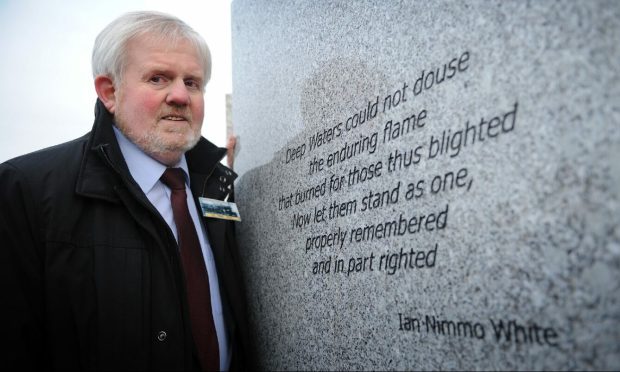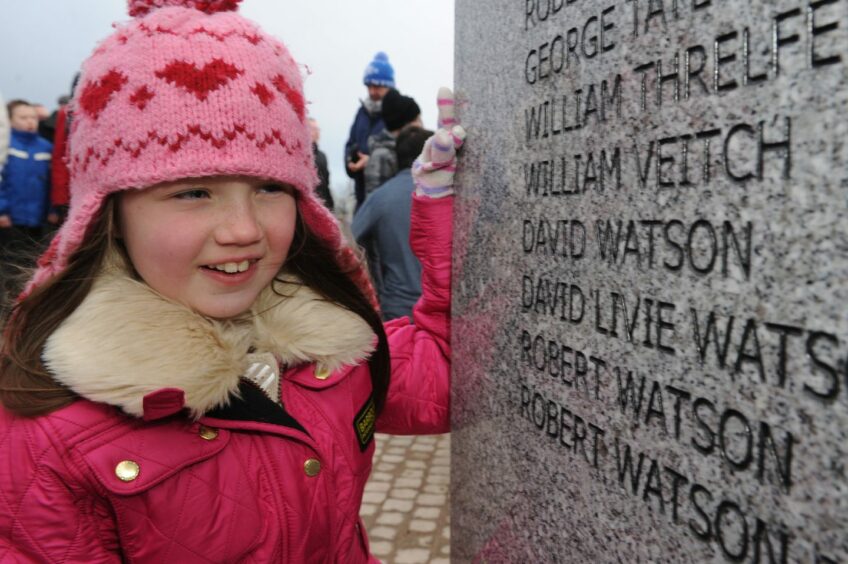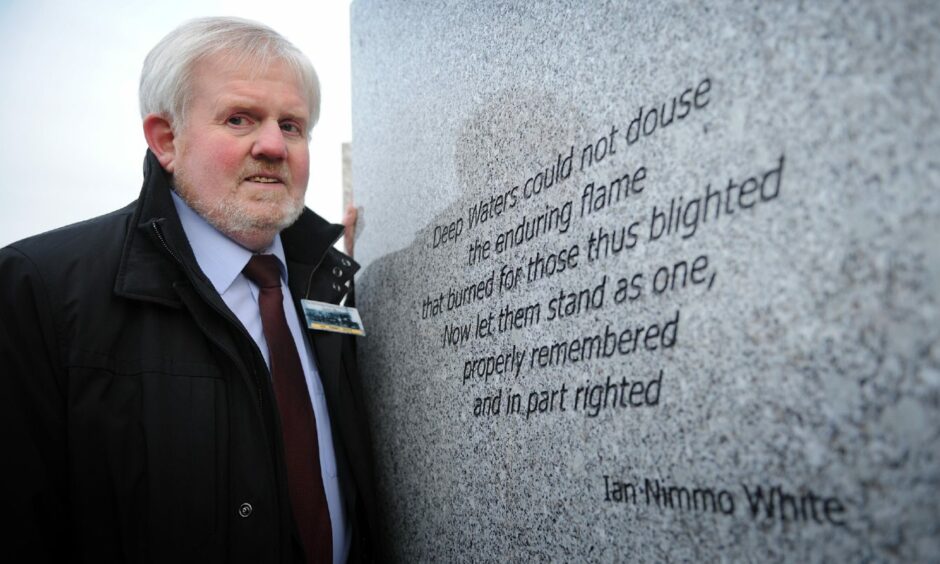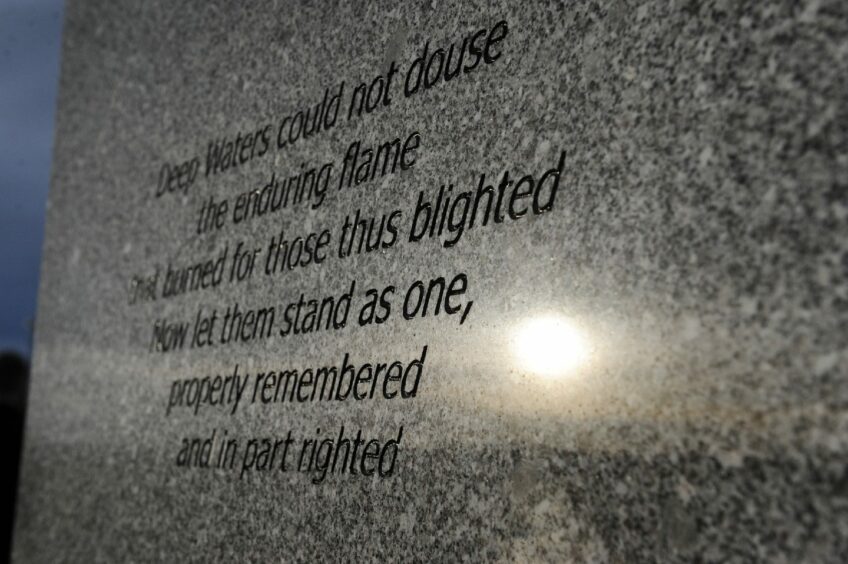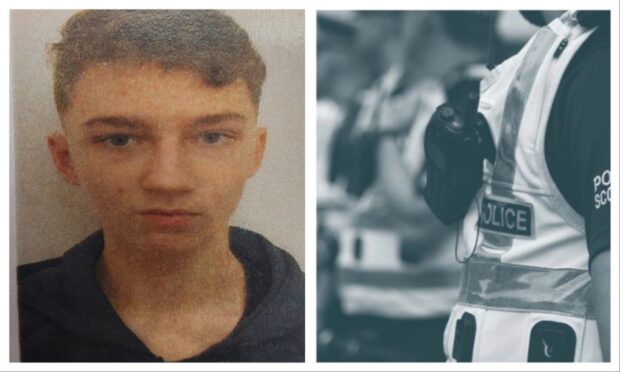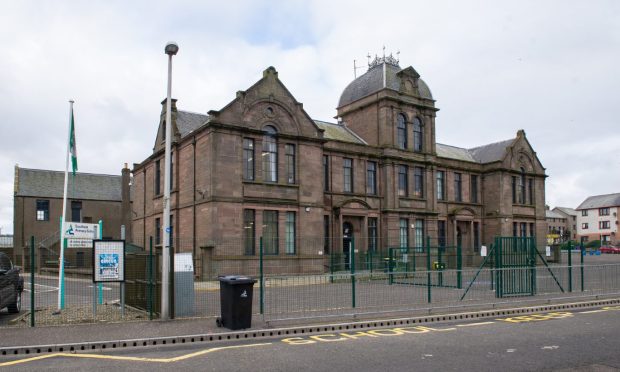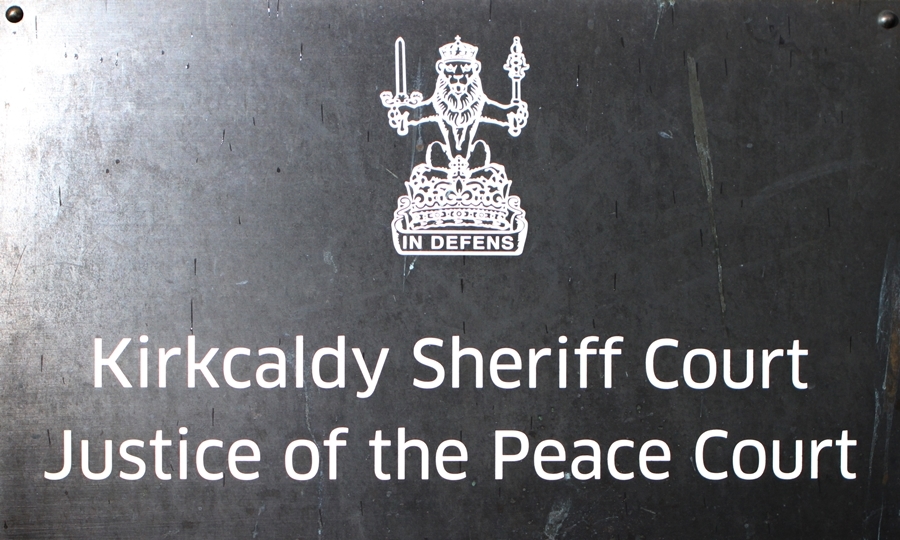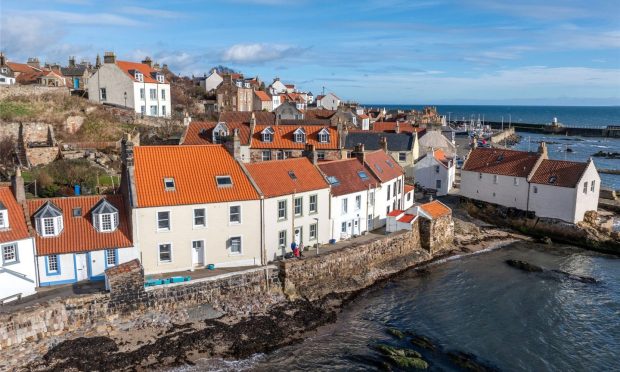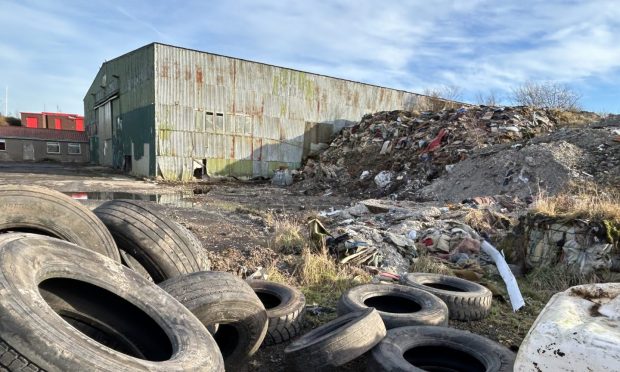Michael Alexander speaks to retired Fife community worker Ian Nimmo White who has produced his third collection of poetry inspired by heritage, major events of the 20th century, and more.
It’s almost eight years since dignified tribute was paid to the victims of the Tay Bridge Disaster when memorials were officially unveiled at Wormit and Dundee to coincide with the 134th anniversary of the tragedy.
Several hundred people including local schoolchildren joined civic dignitaries, descendants of those lost and fundraisers for the official unveiling of giant granite blocks that carry the names of the 59 souls “known to have died” in the tragedy of December 28 1879.
The memorials, comprising three angled granite plates at both Wormit Bay and Dundee Riverside, were crafted at a workshop in Inverurie.
The dignified and long overdue ceremonies at Wormit and Dundee Riverside on December 28, 2013, were followed by a spectacular fireworks display in the evening, watched by an estimated 10,000 people.
‘Best thing’
Thinking back to the fundraising campaign which successfully erected the memorials, former Tay Bridge Disaster Memorial Trust secretary Ian Nimmo White, says, “without a shadow of a doubt”, it was the best thing he was ever involved with.
The retired community worker, who led a campaign in 2011 for a memorial at the unmarked grave of train driver David Mitchell in Leslie Cemetery, also had the honour of his ‘Untitled’ poem being inscribed on the memorials.
“Deep water could not douse the enduring flam that burned for those thus blighted. Now let them stand as one, properly remembered and, in part, righted”, it reads.
However, with three Tay Rail Bridge Disaster poems included in The Shell of Stone – the third book-length collection of his poetry, which has just been released – Ian, now 74, explains he was in his mid-40s before he started writing verse.
“I started writing poetry in 1994, aged about 45, and eventually I was good enough to be accepted onto the Writers’ Register in Edinburgh in 2001,” says Ian.
“Why did I start? I really don’t know the answer to that and I don’t think any poet worth his salt could give you an answer. It’s like a lot of art forms. It kind of comes to you. I’m tempted to say from a ‘higher authority’.
“But I do remember my first poem.
“My wife Janice took a course – she was a librarian – and wanted to keep up to date. When she graduated, I did a poem about her graduation. It was published by somebody down in England.
“I thought ‘well if I can get published maybe I can get good at this’.”
Getting into poetry
Ian’s first poetry collection called Standing Back was published in 2001, followed by Symmetry in 2007.
His poetry went “off the boil” for a number of years – especially when he was “consumed” by the Tay Bridge Disaster Memorial campaign.
More recently, however, a London-based publisher Austin Macauley, took an interest in his work and agreed to publish a manuscript which turned into this latest book.
A keen genealogist, many of the 40 poems it contains resonate with Ian’s passion for heritage, some marking major events of the 20th century, with other poems travelling even further back to previous centuries.
One of the poems he did called ‘We Can’t Let It Be’ is about Marilyn Monroe while another called ‘Fifty Years On’ is about the Vietnam War.
The title of the book, The Shell of Stone, relates to a trip he and his wife made to Loch Leven castle where Mary Queen of Scots was interned as a prisoner.
“We got the boat over and walking round the castle, I remember thinking ‘this is a shell of stone’,” says Ian.
“I wrote a poem called A Queen and I (at Loch Leven Castle). I’m imagining myself back in the 16th century and looking up to the third floor where she was incarcerated.
“Of course back in those days, 19th century technology hadn’t lowered the water yet.
“What you can see now is not what you saw in the 16th century. The water was right up, almost to base of the castle. She had very little room to wander in if at all. I think it was lowered by 12 feet to stop flooding farmland. That was the inspiration for The Shell of Stone though.”
Public service
As a former youth and community officer, Paisley-born Ian devoted his working life to public service and his leisure to celebrating the natural beauty of his adopted Fife.
Settling in the small town of Leslie where he raised a family with his wife, the former youth and community officer for Glenrothes also took a keen interest in the area’s heritage. He lived and worked in Fife for 45 years and now lives in Forfar.
Ian says his working life exposed him to the “full spectrum of the human condition”.
The experience gained in this four-decade long career also gave him priceless knowledge and understanding of the lives of ordinary men and women, who he hopes will be able to relate to those poems and enjoy them.
“The thing about poetry is you have to make it a challenge for people – you can’t make it a dead giveaway,” he says.
“At the same time, you have to strike a balance between that and being utterly obscure.
“I’d hate to think I write anything that the ordinary man and woman couldn’t relate to in their own lives.”
Inspirations
Inspired by poets likes Dylan Thomas, Hugh MacDiarmid, Norman MacCaig and Douglas Dunn, Ian says it’s impossible to write poetry without reading widely.
The medium of poetry also helps him deal with ageing and the inevitable passing of time.
“I find the poetry is a help to me as I get older,” he adds.
“Like everyone else my age, things are beginning to wear and tear, but the poetry is a big help for me because it keeps my mind active.
“I’m not the kind of person who can just retire to the garden as it were and spend time with the grand children – although I enjoy doing these things.
“But we all need something for ourselves as individuals. We need to feel that we have targets and we can get up in the morning and do something. Even if we are retired, we need that impetus.”
Learning from communities
During his days as a youth and community officer, Ian recalls how communities would look to him as a person who’d help their children.
The process worked both ways, however. While he helped create opportunities for young people, he learned from communities himself all the time.
“If you are going to do the job properly, you’ve got to do both things – you’ve got to serve and learn from the community as well,” he says.
“My first job was in a mining village. They have standards, so you can’t just go in as hoity-toity figure. “You have to be prepared to take that history on board.”
Ian’s poems are flavoured with mischief and fun, and while there is always a presence of nostalgia, sometimes sadness, he balances this with poems about the joy of having grand children, observations of wildlife and the ever increasing amount of time he is spending in his garden.
The reader is left with respect for the past and hope for the future.
Scots humour
Amongst all this, he also laces the poems with a good helping of his native Scottish humour.
“I do write in Scots as well,” he says. “I’m a regular contributor to Lallans, the Scots Language Society journal, based in Perth.
“I get Scots poems published as well. I find it easier to do humorous poems in Scots rather than English, although there are some humorous poems in this collection.
“I’ve always found that Scots was a much more natural and two feet on the ground language than English. English is something we have to do in our day to day lives.
“But Scots is who we are. We talk in a kind of Scots accent, language. I used to call it the playground language or the language of the pub. It’s a very earthy and natural and sincere language. That’s a reason why I keep writing in Scots as well as English.”
Tom Hubbard, who was the first librarian of the Scottish Poetry Library, says of Ian’s latest work: “In this new collection, content and craft are of a high order. Readers who have followed Ian’s previous books, as well as his many contributions to magazines and anthologies, will warmly welcome the present volume: one hopes that they will recommend it to those as yet unfamiliar with Ian’s work.”
The Shell of Stone by Ian Nimmo White is available now in bookshops published by Austin Macauley priced £7.99, ISBN 978 139845-036-3.
